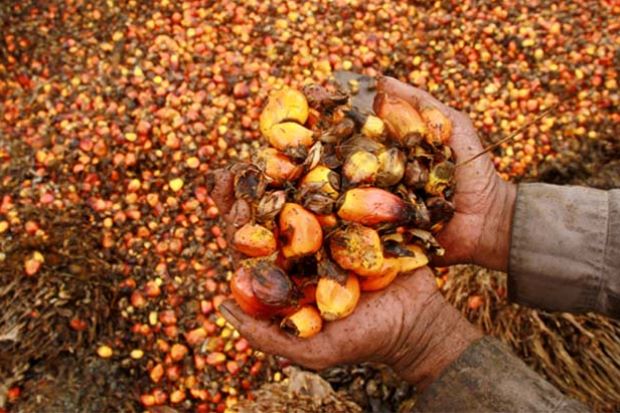Indonesia focuses on palm oil smallholders to raise output
NUSA DUA, Indonesia: Small palm plantations in Indonesia drew more attention than usual at the opening of the nation’s annual palm oil conference on Thursday, as the world’s top palm oil producer seeks to boost overall output by improving smallholder productivity.
Smallholders farm roughly 40 percent of Indonesian land planted with oil palm trees, but account for only 30 percent of its palm oil output due to lower yields because of low quality seeds and outdated farming techniques.
Industry leaders plan to address that inefficiency next year through more investment in and collaboration with smallholders. Smallholder output is expected to rise 20 percent next year from 11 million tonnes in 2016, according to the Indonesia Palm Oil Smallholders’ Association.
“Given that Indonesia cannot expand for new planting, the most possible way to increase production is through productivity improvement, particularly in smallholders,” said Joko Supriyono, chairman of the Indonesia Palm Oil Association, or GAPKI, on the sidelines of the palm conference on the resort island of Bali.
Land for planting palm plantations in Indonesia and Malaysia, which together produce nearly 90 percent of global palm oil, has become increasingly scarce in recent years. Environmental groups blame the industry for extensive deforestation and a choking haze that spreads across Southeast Asia at certain times of the year.
Supriyono said GAPKI has signed an initial agreement with the smallholders’ association, and wants to see more cooperation between GAPKI members and the small plantations, with the larger producers partnering “with smallholders in replanting and assisting smallholders to improve cultivation”.
Indonesia’s agriculture ministry said last month it aimed to replant about 20,000 hectares of smallholder palm plantations this year to boost flagging yields, as it tries to squeeze more output from existing plantations.
“If we plant with good seeds and improve planting practices and maintenance of the plantations, we will have higher production,” said Rino Afrino, secretary general of the Indonesia Palm Oil Smallholders’ Association.
Yields could rise to 3.5 to 4 tonnes of palm oil a hectare, up from 2 to 3 tonnes a hectare now, Afrino said.
Plantations run by smallholders had crude palm oil yields of 2.4 tonnes per hectare between 2014 and 2017, according to government data, compared with company plantation yields of 3 tonnes and a national average of 2.7 tonnes.
Indonesia, the world’s top producer of the tropical oil, produced 33.2 million tonnes of crude palm oil in 2016. – Reuters
Source: http://www.thestar.com.my/business/business-news/2017/11/03/indonesia-focuses-on-palm-oil-smallholders-to-raise-output/#cPtdmuu55OPsikAH.99


 Thailand
Thailand




